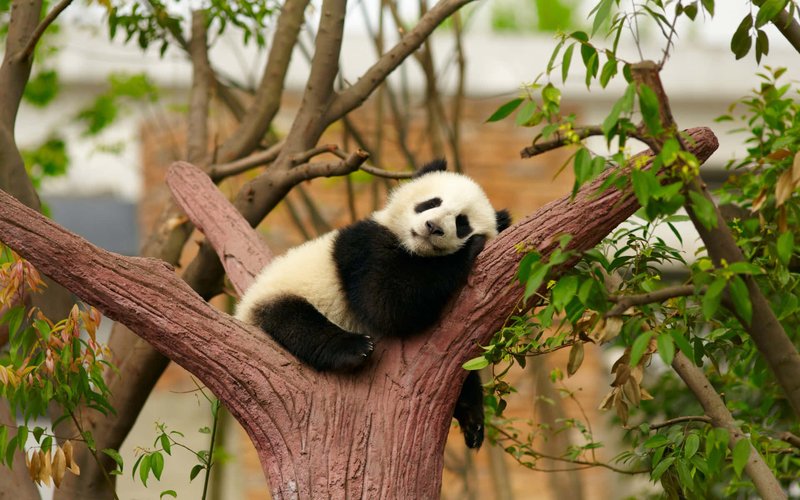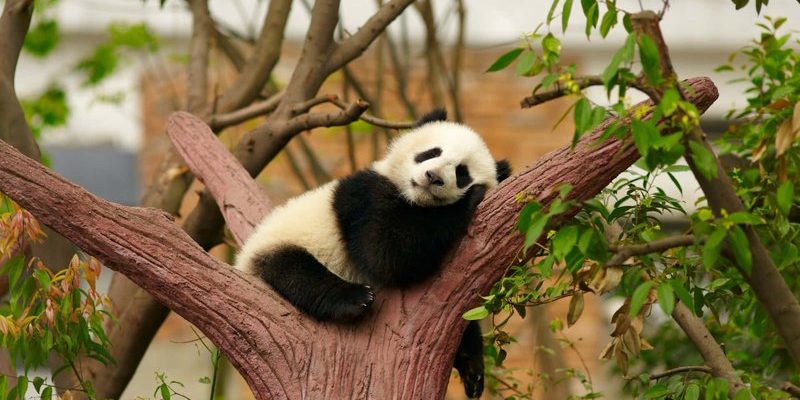
Picture a bustling city. Each bus, train, and bike weaves together to create a thriving environment where people can live and work. In nature, pandas act in a similar way. They interact with their environment in specific ways that help maintain the balance of their ecosystem, especially in the bamboo forests of China where they reside. Let’s dive into what makes these bears such key players in their habitat.
The Importance of Bamboo
Pandas primarily feast on bamboo, which accounts for about 99% of their diet. You might think, “So what? It’s just a plant!” But bamboo is more than just a meal; it’s a vital component of the ecosystem. Not only does it provide food for pandas, but it also plays a crucial role in the forest itself.
Bamboo forests help prevent soil erosion by stabilizing the ground with their roots. This is incredibly important because, without healthy soil, other plants—which might serve as habitats for animals—could suffer. By munching on bamboo, pandas help manage its growth. If pandas didn’t keep the bamboo in check, it could overgrow, choking out other plant species that support a variety of wildlife.
Ecosystem Interactions
Pandas don’t just eat bamboo; they also interact with the environment in other ways. Their foraging habits can help disperse seeds of various plants. Imagine a panda munching away, leaving bits of bamboo and other plant matter behind. This waste provides nutrients for the soil and can encourage new plant life to spring up.
This process creates a thriving habitat for other species that rely on those plants. In turn, those species—whether they be insects, birds, or small mammals—can affect the growth of the forest. It’s a cycle of life that shows how interconnected everything is, with pandas right in the middle of it all.
Habitat Maintenance
Pandas are often called “umbrella species.” This means that by conserving pandas and their habitats, we’re indirectly protecting a whole range of other species that share the same environment. Think of it as a safety net. When conservation efforts focus on pandas, they also help preserve the bamboo forests and the myriad of life inside them.
Maintaining these habitats is crucial, especially in a world where climate change and deforestation pose significant threats. By focusing on habitat protection for pandas, we can ensure that other species, including birds, insects, and even other mammals, continue to thrive.
Climate Regulation
Bamboo forests do more than just provide food for pandas; they also help with climate regulation. Trees and plants act as carbon sinks—absorbing carbon dioxide from the atmosphere and releasing oxygen. The healthier the bamboo forest, the better it can take in CO2, which helps combat climate change.
So, when we support the preservation of panda habitats, we’re not just saving a cute bear; we’re also playing a part in fighting global warming. If pandas are thriving, it’s a good indicator that their ecosystem is healthy and performing its role in the larger climate system.
The Role of Pandas in Biodiversity
Biodiversity refers to the variety of living things in a particular habitat. When pandas thrive, they contribute to the richness of their ecosystem. This diversity is key for resilience—it allows the ecosystem to adapt to changes, whether they’re caused by nature or human activity.
By protecting pandas and their bamboo forests, we ensure that a diverse array of animals and plants remain in balance. For instance, many animals depend on bamboo for shelter or food, such as insects, birds, and small mammals. Fewer pandas can lead to less bamboo, which can adversely affect the entire ecosystem.
The Ripple Effect
The relationship between pandas and their environment demonstrates a ripple effect. When one species is affected, it can impact a whole chain of other species. If pandas were to decline in numbers, the effects would be felt throughout the ecosystem.
This emphasizes how important it is to consider the role of every species, including the panda, in maintaining ecological balance. Conservation efforts can help ensure that these connections remain intact, allowing all species to thrive together.
Human Impact on the Panda’s Ecosystem
Humans have a significant impact on the panda’s ecosystem—both positively and negatively. On one hand, habitat destruction from logging, farming, and urban development has drastically reduced the spaces available for pandas and the bamboo they depend on. Picture a giant chunk of land being cleared for a new development. That’s prime panda habitat disappearing.
On the other hand, there are ongoing conservation efforts aimed at protecting these bears and their environments. Nature reserves have been established specifically to keep pandas safe and to promote the regrowth of bamboo forests. These efforts show that when humans choose to take action, we can restore balance to nature.
Community Involvement
Local communities play a crucial role in the conservation of panda habitats. In many areas, efforts are underway to educate people about the importance of preserving their natural surroundings. By involving locals in preservation activities, the hope is to create a sense of ownership and responsibility towards the forest.
This collaboration can be powerful. When people see that pandas are not just adorable animals but a vital part of their ecosystem, they may be more inclined to support conservation initiatives, leading to healthier forests and, ultimately, healthier pandas.
In summary, the role of pandas in their ecosystem goes far beyond their cuddly appearance. They are a keystone species that helps maintain the health of their bamboo forests and, by extension, the various wildlife that depend on these habitats. By supporting pandas, we’re not just saving a single species; we’re protecting a web of life that extends far beyond them.
So the next time you see a panda, remember that you’re looking at a key player in a delicate, interconnected ecosystem. It’s our responsibility to ensure that these gentle giants—and the ecosystems they help sustain—continue to thrive for generations to come.

